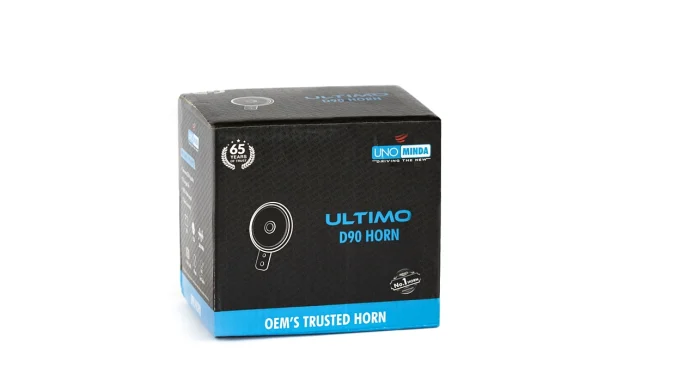Indian roads are known for the excessive honking that has become a routine part of driving. This constant honking, often used as a way to communicate or express impatience, tends to wear out a vehicle’s horn more quickly than expected. To address this issue, many motorists turn to aftermarket horns, with loud trumpet horns being particularly popular. However, for those who prefer to comply with noise regulations while preserving the original equipment manufacturer (OEM) quality of their vehicle, Uno Minda offers a more refined solution with its D90 series of horns.
One of the products from this range, the D90 835442 dual horn, recently came into our hands for testing. In this review, we will go over the key specifications and features of this model, and in a follow-up report, we’ll share our hands-on experience after installation.
What’s in the Box?
Upon opening the box, we found two identical disc horns, each with a 90mm diameter. The package also included connectors, wires, a clear installation diagram, and detailed instructions to guide users through the process. The D90 operates on a 12-volt power supply, producing a sound output ranging from 105 to 110 decibels. This sound level meets Indian RTO guidelines, ensuring compliance with noise regulations.
Durability has been a focus in the horn’s design, with 100% waterproof construction and black zinc-nickel plating that provides rust protection. The horn has undergone extensive testing, including over 300,000 test cycles, to ensure long-lasting performance.
Compatibility and Availability
Uno Minda’s D90 dual horn is compatible with a variety of Maruti Suzuki and Tata passenger cars, offering OEM-quality sound and reliability. Priced affordably at Rs. 675, the product comes with a two-year warranty and is available through Uno Minda’s official website, as well as online platforms like Amazon and Boodmo.
What’s Next?
To validate Uno Minda’s claims, we’ll be installing the D90 dual horn in a compatible vehicle. In the follow-up report, we’ll provide a step-by-step account of the installation process, any challenges encountered, and a comparison of the D90’s sound with the original horn. Stay tuned for a detailed evaluation of its performance and usability.

